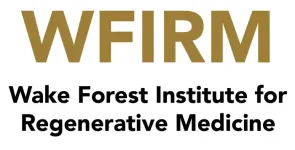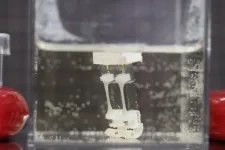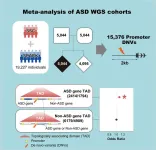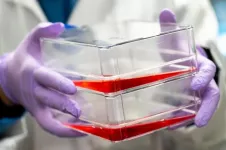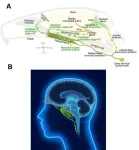(Press-News.org) WINSTON-SALEM, NC, January 26, 2024 – The Wake Forest Institute for Regenerative Medicine (WFIRM) is the recipient of an inaugural U.S. National Science Foundation (NSF) Engines Program award. The NSF Engines: Piedmont Triad Regenerative Medicine Engine is a regional project that provides an innovation ecosystem to stimulate workforce development, job creation, and economic growth through the development of technologies that benefit the emerging industry. The Piedmont Triad Regenerative Medicine Engine team is led by WFIRM, and includes Forsyth Technical Community College (FTCC), North Carolina Agricultural and Technical State University (N.C. A&T), the RegenMed Development Organization (ReMDO), and Winston Salem State University (WSSU).
Regenerative medicine, a multi-disciplinary field that involves engineering and science expertise, represents a shift in how human pathology is addressed. These products include biomaterials, tissue engineered products, and cells and agents that trigger natural pathways of regeneration. The hope of these products is to replace or restore function to tissues and organs compromised by injury or disease.
User-inspired technical challenges will be addressed in collaboration with partnered institutions through Innovation, Translation, and Education Cores (ITECs) that will be established, each focused on a broad area of unmet need. The ITECs will focus on Development and Manufacturing, Biomaterials, Cell Biology, In-Space Manufacturing, and Workforce Development and will be located with WFIRM, N.C. A&T, WSSU, ReMDO, and FTCC, respectively.
The five ITECs bring together and draw upon the resources and talent available through the region and includes 12 focused components: WFIRM, partnering institutions of higher education, education and workforce development programs, ReMDO, the Regenerative Manufacturing Innovation Consortium, investment partners, non-profit organizations, economic development partners, government partners, the ReMDO Test Bed, ReMDO Innovation Accelerator with start-ups and emerging companies, and In-Space biomanufacturing in partnership with Axiom Space and the International Space Station. In-Space biomanufacturing will provide opportunities to explore a new frontier for tissue and organ regeneration in microgravity, adding significant forward-thinking engagement and workforce development through the in-space ITEC.
“We are excited to work with the NSF in the formation of a regenerative medicine engine that is centered on the development of use inspired products, training and commercialization, thereby expanding job opportunities and economic development to our region,” said Dr. Anthony Atala, Director of WFIRM.
A network of mentorship opportunities and training across all aspects of the industry will be established through the program and deployed throughout the regional higher education system. Emphasis will be placed on inclusion of populations historically underrepresented in STEM-related industries at all levels, from technical skills to executives, through the three academic partners, N.C. A&T, WSSU, and Forsyth Tech.
“A significant challenge facing regenerative medicine is developing the professional and skilled technical workforce required to maintain the advances in the field,” explained Gary Green, EdD, Chief Workforce Development Officer for WFIRM. “Workforce development also represents a critical mechanism through which the Engine may make significant societal improvements within the region of service through increased opportunities for training and jobs.”
NSF Engines award provides $15 million for the first 2 years and up to $160 million for 10 years. "The inaugural NSF Engines awards demonstrate our enduring commitment to create opportunity everywhere and enable innovation anywhere," said NSF Director Sethuraman Panchanathan. "Through these NSF Engines, NSF aims to expand the frontiers of technology and innovation and spur economic growth across the nation through unprecedented investments in people and partnerships. NSF Engines hold significant promise to elevate and transform entire geographic regions into world-leading hubs of innovation."
WFIRM is located in Innovation Quarter, a vibrant, mixed-use innovation district located in downtown Winston-Salem, North Carolina. Anchored by Wake Forest University School of Medicine—the academic core of Advocate Health—Innovation Quarter is home to a community of more than 4,500 workers in 115 companies and four other institutions of higher learning. Innovation Quarter features developmental spaces and workspaces to allow expansion of small business and research facilities.
WFIRM would like to acknowledge the more than 80 partners of the program who showed unwavering support for this initiative, including regional academic institutions, non-profits, economic development agencies, and industrial, investment and government partners.
For more information about the NSF Engines: Piedmont Triad Regenerative Medicine, visit RegenMedEngine.com.
Launched by the NSF Directorate for Technology, Innovation and Partnerships in May 2022, the NSF Engines program uniquely harnesses the nation's science and technology research, development enterprise and regional-level resources. For more information, visit the NSF Engines program website at https://new.nsf.gov/funding/initiatives/regional-innovation-engines.
About Wake Forest Institute for Regenerative Medicine: The Wake Forest Institute for Regenerative Medicine is recognized as an international leader in translating scientific discovery into clinical therapies, with many world firsts, including the development and implantation of the first engineered organ in a patient. Over 500 people at the institute, the largest in the world, work on more than 40 different tissues and organs. A number of the basic principles of tissue engineering and regenerative medicine were first developed at the institute. WFIRM researchers have successfully engineered replacement tissues and organs in all four categories – flat structures, tubular tissues, hollow organs and solid organs – and 16 different applications of cell/tissue therapy technologies, such as skin, urethras, cartilage, bladders, muscle, kidney, and vaginal organs, have been successfully used in human patients. The institute, which is part of Wake Forest University School of Medicine, is located in the Innovation Quarter in downtown Winston-Salem, NC, and is driven by the urgent needs of patients. The institute is making a global difference in regenerative medicine through collaborations with over 500 entities and institutions worldwide, through its government, academic and industry partnerships, its start-up entities, and through major initiatives in breakthrough technologies, such as tissue engineering, cell therapies, diagnostics, drug discovery, biomanufacturing, nanotechnology, gene editing and 3D printing.
Media Contact: Emily Gregg, egregg@wakehealth.edu
END
Wake Forest Institute for Regenerative Medicine awarded $160 million 10-year US National Science Foundation Regional Innovation Engines grant
2024-01-26
ELSE PRESS RELEASES FROM THIS DATE:
Powering the future: Unlocking the role of hydrogen in lithium-ion batteries
2024-01-26
Lithium-ion batteries stand out as one of the most prevalent rechargeable battery technologies in the present era. Within these batteries, lithium-cobalt oxides (LiCoO2) are widely used as the materials for positive electrodes or cathodes (the conductors through which electric current either enters or exits a substance). The cathode plays a pivotal role in lithium-ion batteries and influences their capacity, performance over many charge-discharge cycles, and ability to manage heat.
One major issue leading to the deterioration of these batteries is the creation of hydrogen through the splitting of water. Therefore, gaining insights into how hydrogen builds ...
Scientists design a two-legged robot powered by muscle tissue
2024-01-26
Compared to robots, human bodies are flexible, capable of fine movements, and can convert energy efficiently into movement. Drawing inspiration from human gait, researchers from Japan crafted a two-legged biohybrid robot by combining muscle tissues and artificial materials. Publishing on January 26 in the journal Matter, this method allows the robot to walk and pivot.
“Research on biohybrid robots, which are a fusion of biology and mechanics, is recently attracting attention as a new field of robotics featuring biological function,” says corresponding author Shoji Takeuchi of the University of Tokyo, Japan. “Using muscle ...
Genomic “butterfly effect” explains risk for autism spectrum disorder
2024-01-26
Researchers in the RIKEN Center for Brain Science (CBS) examined the genetics of autism spectrum disorder (ASD) by analyzing mutations in the genomes of individuals and their families. They discovered that a special kind of genetic mutation works differently from typical mutations in how it contributes to the condition. In essence, because of the three-dimensional structure of the genome, mutations are able to affect neighboring genes that are linked to ASD, thus explaining why ASD can occur even without direct mutations to ASD-related genes. This study appeared in the scientific journal Cell Genomics on January 26.
ASD is a group of conditions characterized in part ...
Cultivated meat production costs could fall significantly with new cells created at Tufts University
2024-01-26
Cellular agriculture – the production of meat from cells grown in bioreactors rather than harvested from farm animals – is taking leaps in technology that are making it a more viable option for the food industry. One such leap has now been made at the Tufts University Center for Cellular Agriculture (TUCCA), led by David Kaplan, Stern Family Professor of Engineering, in which researchers have created bovine (beef) muscle cells that produce their own growth factors, a step that can significantly cut costs of production.
Growth factors, whether ...
Researchers discover why one type of chemotherapy works best in bladder cancer
2024-01-26
Tisch Cancer Institute researchers discovered that a certain type of chemotherapy improves the immune system’s ability to fight off bladder cancer, particularly when combined with immunotherapy, according to a study published in Cell Reports Medicine in January.
These findings may explain why the approach, cisplatin chemotherapy, can lead to cure in a small subset of patients with metastatic, or advanced, bladder cancer. Researchers also believe that their findings could explain why clinical trials combining another type of chemotherapy, carboplatin-based chemo, with immunotherapy have not been ...
Emergency contraception related ER visits dropped significantly over 14 year period
2024-01-26
Following federal approval for over the counter emergency contraception in 2006, emergency departments across the U.S. saw dramatic decreases in related visits and medical charges, a new study suggests.
Emergency room visits related to emergency contraception fell by 96 %, from 17,019 to 659, while total related hospital expenses decreased by $7.2 million – from $7.6 million to $385,946 – between 2006 and 2020. The most notable decrease was between 2006-2007 for people primarily seen for emergency contraception.
The Michigan Medicine led findings appear in JAMA Network ...
Job flows into and out of health care before and after the pandemic
2024-01-26
About The Study: The results of this study of approximately 18 million health care industry employees suggest a substantial and persistent increase in health care workforce turnover after the pandemic, which may have long-lasting implications for workers’ willingness to remain in health care jobs. Policymakers and health care organizations may need to act to prevent further losses of experienced staff.
Authors: Karen Shen, Ph.D., of the Johns Hopkins Bloomberg School of Public Health in Baltimore, is the corresponding ...
Incidence of fit test failure during N95 respirator reuse and extended use
2024-01-26
About The Study: In this study of 824 N95s used by 412 emergency department health care workers practicing N95 reuse, fit failure occurred in 38.7% of masks after one shift. Trifold N95s had higher incidence of fit failure compared with dome N95s. These results may inform pandemic preparedness, specifically policies related to N95 selection and reuse practices.
Authors: Ralph C. Wang, M.D., M.A.S., of the University of California, San Francisco, is the corresponding author.
To access the embargoed study: Visit our For The Media website at this link https://media.jamanetwork.com/
(doi:10.1001/jamanetworkopen.2023.53631)
Editor’s ...
Clinical risk and outpatient therapy utilization for COVID-19 in the Medicare population
2024-01-26
About The Study: In this study of patients enrolled in Medicare in 2022, those at the highest risk for severe COVID-19 infection received COVID-19 therapy less often than those with the least risk. Disparities in therapy access were found by patient age, race and ethnicity, Medicaid eligibility, and nursing home residence.
Authors: Michael L. Barnett, M.D., of the Harvard T.H. Chan School of Public Health in Boston, is the corresponding author.
To access the embargoed study: Visit our For The Media website at this link https://media.jamanetwork.com/
(doi:10.1001/jamahealthforum.2023.5044)
Editor’s ...
Brain drain - nasopharyngeal lymphatics found to be crucial for cerebrospinal fluid outflow
2024-01-26
In a groundbreaking study published in Nature, South Korean researchers led by Director KOH Gou Young of the Center for Vascular Research within the Institute for Basic Science (IBS) have uncovered a distinctive network of lymphatic vessels at the back of the nose that plays a critical role in draining cerebrospinal fluid (CSF) from the brain. The study, sheds light on a previously unknown route for CSF outflow, potentially unlocking new avenues for understanding and treating neurodegenerative conditions.
In our brains, ...
